The structures of the endocrine system. Comprehensive Guide to the Endocrine System: Structure, Function, and Hormonal Regulation
What are the main components of the endocrine system. How do endocrine glands differ from exocrine glands. What is the role of hormones in maintaining homeostasis. How does the endocrine system communicate with target cells throughout the body.
The Fundamental Structure of the Endocrine System
The endocrine system is a complex network of glands and organs that produce and secrete hormones directly into the bloodstream. These hormones act as chemical messengers, traveling throughout the body to regulate various physiological processes and maintain homeostasis.
The major endocrine glands include:
- Pituitary gland
- Thyroid gland
- Parathyroid glands
- Adrenal glands
- Pancreas
- Pineal gland
- Gonads (ovaries in females, testes in males)
In addition to these primary glands, several other organs and tissues have secondary endocrine functions, including the hypothalamus, thymus, heart, kidneys, stomach, small intestine, liver, skin, and even bone tissue.

Endocrine vs. Exocrine Glands: Key Differences
How do endocrine glands differ from exocrine glands? Endocrine glands are ductless and secrete hormones directly into the surrounding interstitial fluid, which then enter the bloodstream. In contrast, exocrine glands release their secretions through ducts onto epithelial surfaces or into body cavities. Examples of exocrine glands include sweat glands, salivary glands, and sebaceous glands.
The Intricate Functions of Endocrine Organs
Each endocrine organ plays a unique role in maintaining bodily functions:
- Pituitary gland: Often called the “master gland,” it produces hormones that control other endocrine glands and regulate growth, reproduction, and metabolism.
- Thyroid gland: Secretes hormones that regulate metabolism, body temperature, and calcium homeostasis.
- Parathyroid glands: Produce parathyroid hormone, which regulates calcium and phosphate levels in the blood.
- Adrenal glands: Secrete stress hormones like cortisol and adrenaline, as well as hormones that regulate salt and water balance.
- Pancreas: Produces insulin and glucagon to regulate blood sugar levels.
- Pineal gland: Secretes melatonin, which regulates sleep-wake cycles.
- Gonads: Produce sex hormones that control reproductive functions and secondary sexual characteristics.
Hormones: The Chemical Messengers of the Endocrine System
Hormones are the primary means of communication within the endocrine system. These chemical messengers are secreted by endocrine glands and travel through the bloodstream to target specific cells or organs. Upon reaching their destination, hormones bind to receptors on or within the target cells, triggering specific physiological responses.
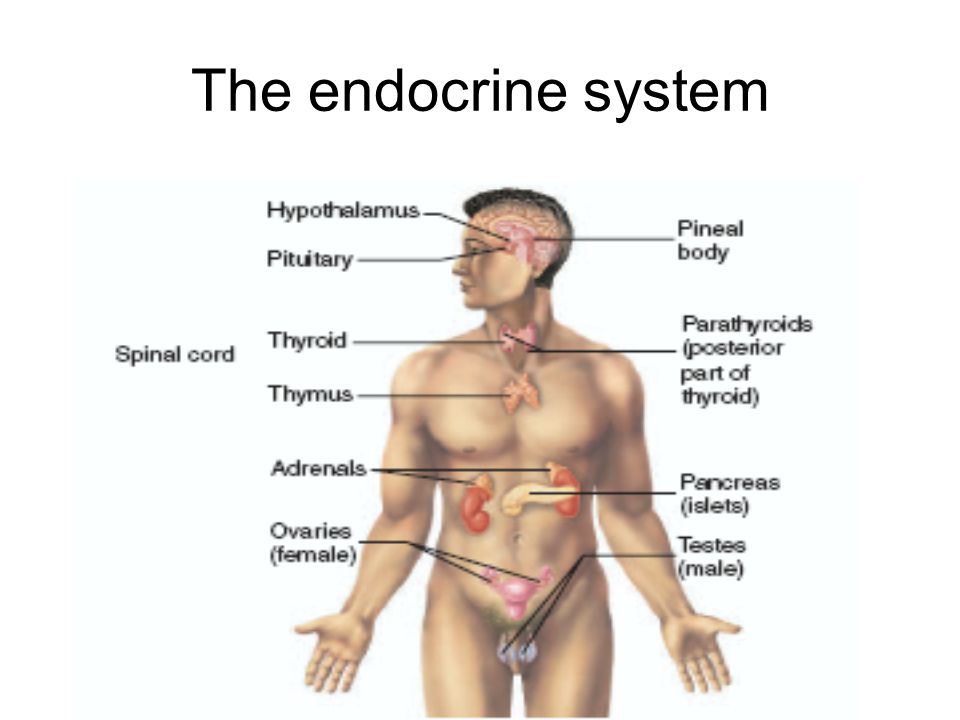
Types of Hormones
Hormones can be classified into three main categories based on their chemical structure:
- Peptide hormones: Composed of amino acids (e.g., insulin, growth hormone)
- Steroid hormones: Derived from cholesterol (e.g., cortisol, estrogen, testosterone)
- Amine hormones: Derived from amino acids (e.g., thyroid hormones, epinephrine)
The Endocrine System’s Role in Homeostasis
How does the endocrine system contribute to maintaining homeostasis? The endocrine system plays a crucial role in maintaining the body’s internal balance through various feedback mechanisms. These mechanisms help regulate:
- Metabolism and energy balance
- Growth and development
- Reproduction and sexual function
- Blood pressure and fluid balance
- Blood glucose levels
- Stress response
- Calcium homeostasis
By constantly monitoring and adjusting hormone levels, the endocrine system ensures that the body’s physiological processes remain within optimal ranges, even in the face of changing internal and external environments.

Endocrine Signaling: A Precise Communication System
The endocrine system employs a unique method of communication known as chemical signaling. This process involves the following steps:
- Hormone synthesis and secretion by endocrine glands
- Transport of hormones through the bloodstream
- Binding of hormones to specific receptors on target cells
- Activation of cellular responses
What makes endocrine signaling different from neural signaling? Unlike the rapid, localized effects of neurotransmitters in the nervous system, hormones typically produce slower, more prolonged responses that can affect multiple organs and tissues throughout the body.
Modes of Hormone Action
Hormones can act on target cells in several ways:
- Direct gene activation: Steroid hormones can enter cells and directly influence gene expression
- Second messenger systems: Many peptide hormones bind to cell surface receptors, triggering intracellular signaling cascades
- Ion channel regulation: Some hormones can alter the permeability of cell membranes to specific ions
The Interplay Between the Endocrine and Nervous Systems
While the endocrine and nervous systems are distinct, they often work in concert to regulate bodily functions. This collaboration is particularly evident in the hypothalamus-pituitary axis, where the hypothalamus (part of the nervous system) controls the release of hormones from the pituitary gland (part of the endocrine system).

How do these two systems complement each other? The nervous system provides rapid, short-term responses to stimuli, while the endocrine system offers slower but more sustained regulation of physiological processes. Together, they ensure a comprehensive approach to maintaining homeostasis and coordinating complex bodily functions.
Endocrine Disorders: When the System Malfunctions
Disruptions in the endocrine system can lead to a variety of disorders, ranging from mild to life-threatening. Some common endocrine disorders include:
- Diabetes mellitus: Impaired insulin production or action
- Thyroid disorders: Hyperthyroidism (overactive thyroid) or hypothyroidism (underactive thyroid)
- Cushing’s syndrome: Excessive cortisol production
- Addison’s disease: Insufficient adrenal hormone production
- Growth hormone deficiency or excess
- Polycystic ovary syndrome (PCOS): Hormonal imbalance affecting ovarian function
These disorders often result from either overproduction (hypersecretion) or underproduction (hyposecretion) of specific hormones, or from problems with hormone receptors on target cells.
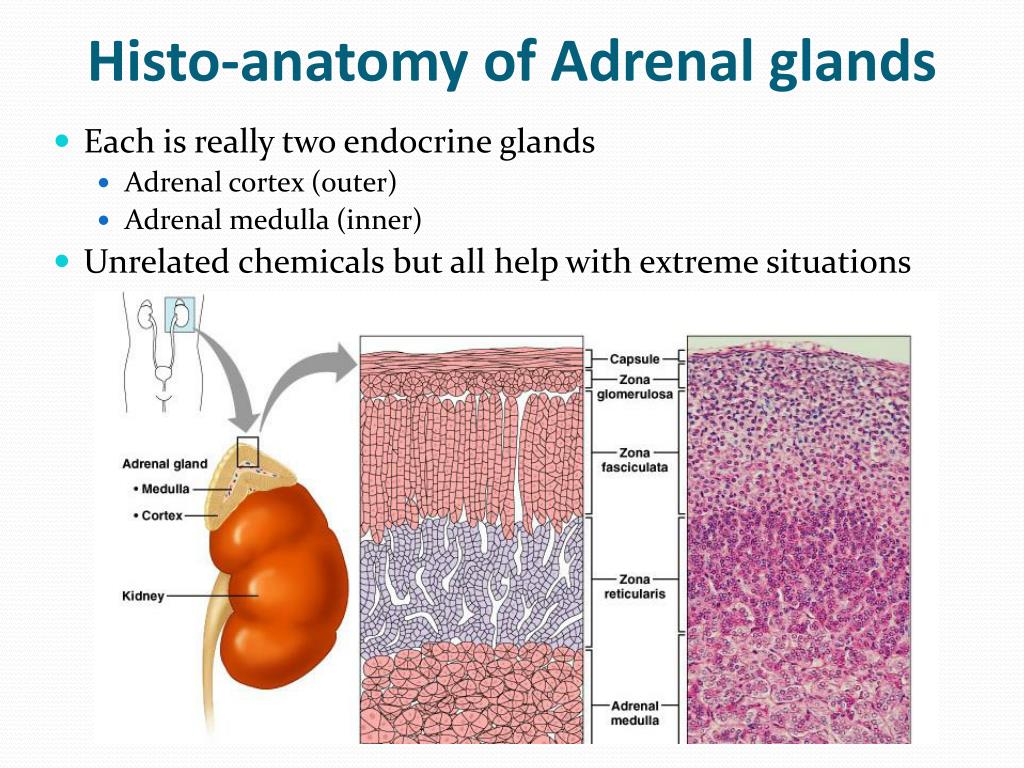
Diagnosis and Treatment of Endocrine Disorders
Diagnosing endocrine disorders typically involves a combination of clinical evaluation, blood tests to measure hormone levels, and imaging studies. Treatment approaches may include:
- Hormone replacement therapy
- Medications to suppress or stimulate hormone production
- Surgical removal of tumors or overactive glands
- Lifestyle modifications (diet, exercise, stress management)
Advances in endocrinology continue to improve our understanding of these complex disorders and lead to more effective treatment strategies.
The Future of Endocrine Research and Medicine
As our knowledge of the endocrine system expands, new frontiers in research and clinical applications are emerging. Some exciting areas of development include:
- Personalized medicine approaches based on individual hormone profiles
- Novel drug delivery systems for more targeted hormone therapies
- Gene therapy for endocrine disorders
- Artificial intelligence and machine learning applications in endocrinology
- Exploration of the endocrine functions of newly discovered organs and tissues
These advancements hold the promise of more precise diagnoses, more effective treatments, and a deeper understanding of the intricate workings of the endocrine system.

In conclusion, the endocrine system is a remarkable network of glands and organs that play a vital role in regulating numerous physiological processes. Through the precise production and secretion of hormones, this system helps maintain homeostasis, coordinates growth and development, and enables the body to respond to various internal and external stimuli. As research in endocrinology continues to progress, we can expect even greater insights into the complexities of hormonal regulation and more sophisticated approaches to treating endocrine disorders.
14.1: Structures of the Endocrine System
- Last updated
- Save as PDF
- Page ID
- 59432
- OpenStax
- OpenStax
The endocrine system consists of cells, tissues, and organs that secrete hormones as a primary or secondary function. The endocrine gland is the major player in this system. The primary function of these ductless glands is to secrete their hormones directly into the surrounding fluid. The interstitial fluid and the blood vessels then transport the hormones throughout the body. The endocrine system includes the pituitary, thyroid, parathyroid, adrenal, and pineal glands (Figure \(\PageIndex{1}\)). Some of these glands have both endocrine and non-endocrine functions. For example, the pancreas contains cells that function in digestion as well as cells that secrete the hormones insulin and glucagon, which regulate blood glucose levels. The hypothalamus, thymus, heart, kidneys, stomach, small intestine, liver, skin, female ovaries, and male testes are other organs that contain cells with endocrine function. Moreover, adipose tissue has long been known to produce hormones, and recent research has revealed that even bone tissue has endocrine functions.
For example, the pancreas contains cells that function in digestion as well as cells that secrete the hormones insulin and glucagon, which regulate blood glucose levels. The hypothalamus, thymus, heart, kidneys, stomach, small intestine, liver, skin, female ovaries, and male testes are other organs that contain cells with endocrine function. Moreover, adipose tissue has long been known to produce hormones, and recent research has revealed that even bone tissue has endocrine functions.
Figure \(\PageIndex{1}\): Endocrine System Endocrine glands and cells are located throughout the body and play an important role in homeostasis
The ductless endocrine glands are not to be confused with the body’s exocrine system, whose glands release their secretions through ducts. Examples of exocrine glands include the sebaceous and sweat glands of the skin. As just noted, the pancreas also has an exocrine function: most of its cells secrete pancreatic juice through the pancreatic and accessory ducts to the lumen of the small intestine
Contributed by
Open Stax CNS http://cnx. org/contents/[email protected]
org/contents/[email protected]
- Back to top
- Was this article helpful?
- Article type
- Section or Page
- Author
- OpenStax
- License
- CC BY
- OER program or Publisher
- OpenStax
- Tags
17.1 An Overview of the Endocrine System – Anatomy and Physiology 2e
Learning Objectives
By the end of this section, you will be able to:
- Distinguish the types of intercellular communication, their importance, mechanisms, and effects
- Identify the major organs and tissues of the endocrine system and their location in the body
Communication is a process in which a sender transmits signals to one or more receivers to control and coordinate actions.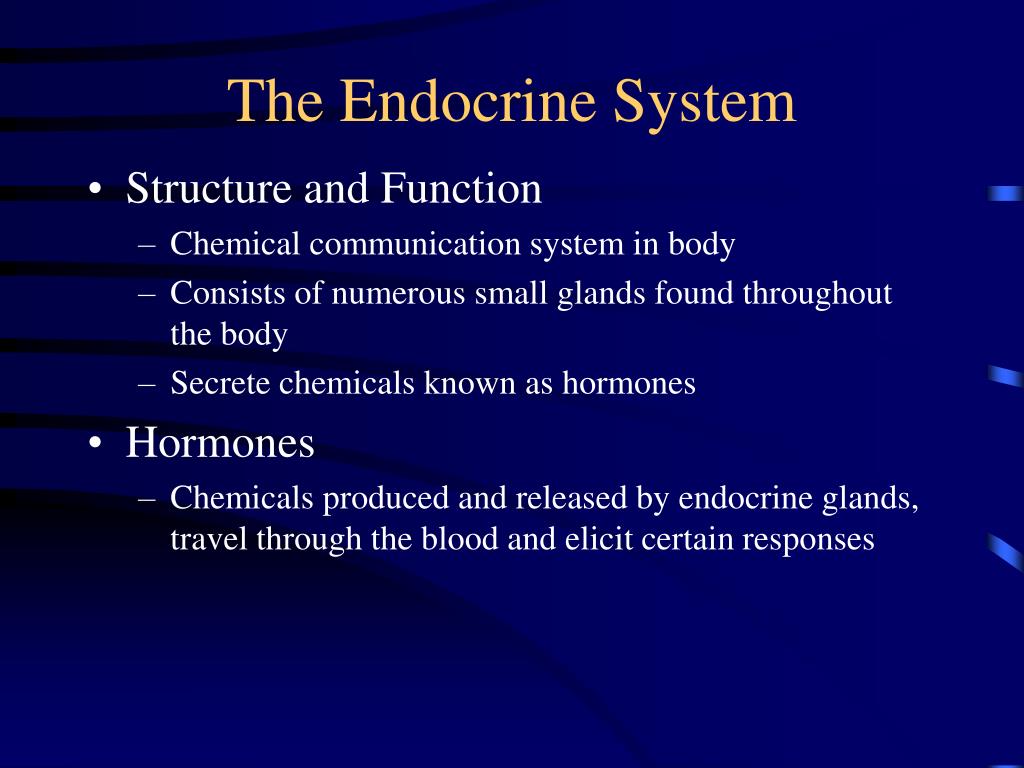 In the human body, two major organ systems participate in relatively “long distance” communication: the nervous system and the endocrine system. Together, these two systems are primarily responsible for maintaining homeostasis in the body.
In the human body, two major organ systems participate in relatively “long distance” communication: the nervous system and the endocrine system. Together, these two systems are primarily responsible for maintaining homeostasis in the body.
Neural and Endocrine Signaling
The nervous system uses two types of intercellular communication—electrical and chemical signaling—either by the direct action of an electrical potential, or in the latter case, through the action of chemical neurotransmitters such as serotonin or norepinephrine. Neurotransmitters act locally and rapidly. When an electrical signal in the form of an action potential arrives at the synaptic terminal, they diffuse across the synaptic cleft (the gap between a sending neuron and a receiving neuron or muscle cell). Once the neurotransmitters interact (bind) with receptors on the receiving (post-synaptic) cell, the receptor stimulation is transduced into a response such as continued electrical signaling or modification of cellular response.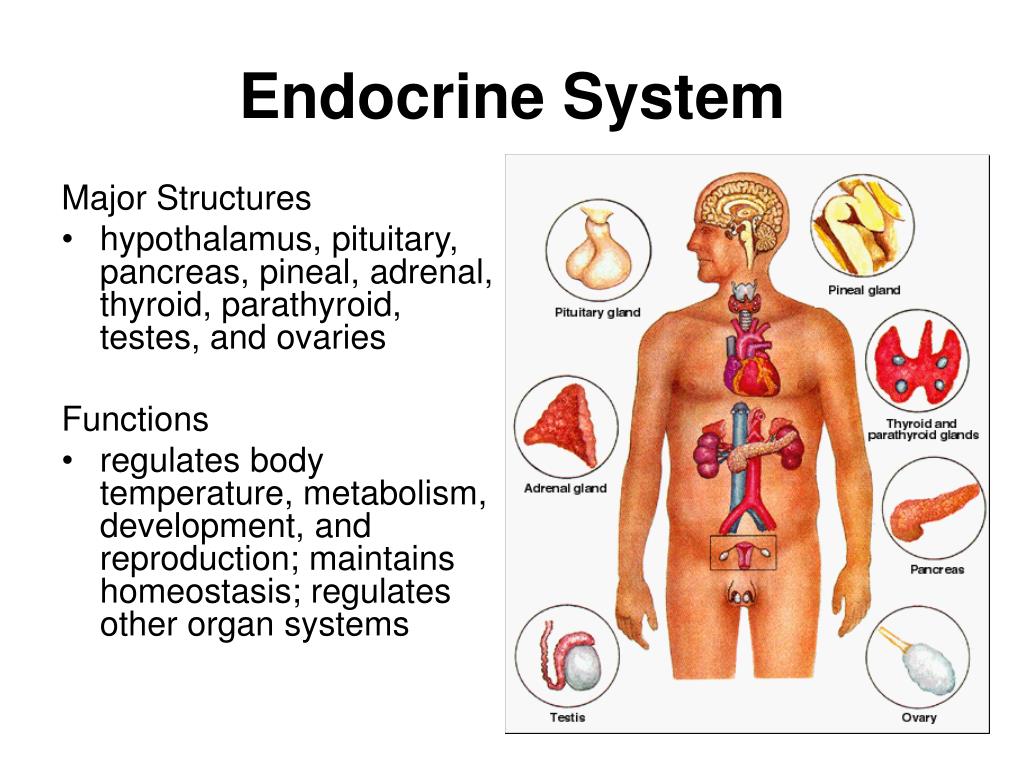 The target cell responds within milliseconds of receiving the chemical “message”; this response then ceases very quickly once the neural signaling ends. In this way, neural communication enables body functions that involve quick, brief actions, such as movement, sensation, and cognition.In contrast, the endocrine system uses just one method of communication: chemical signaling. These signals are sent by the endocrine organs, which secrete chemicals—the hormone—into the extracellular fluid. Hormones are transported primarily via the bloodstream throughout the body, where they bind to receptors on target cells, inducing a characteristic response. As a result, endocrine signaling requires more time than neural signaling to prompt a response in target cells, though the precise amount of time varies with different hormones. For example, the hormones released when you are confronted with a dangerous or frightening situation, called the fight-or-flight response, occur by the release of adrenal hormones—epinephrine and norepinephrine—within seconds.
The target cell responds within milliseconds of receiving the chemical “message”; this response then ceases very quickly once the neural signaling ends. In this way, neural communication enables body functions that involve quick, brief actions, such as movement, sensation, and cognition.In contrast, the endocrine system uses just one method of communication: chemical signaling. These signals are sent by the endocrine organs, which secrete chemicals—the hormone—into the extracellular fluid. Hormones are transported primarily via the bloodstream throughout the body, where they bind to receptors on target cells, inducing a characteristic response. As a result, endocrine signaling requires more time than neural signaling to prompt a response in target cells, though the precise amount of time varies with different hormones. For example, the hormones released when you are confronted with a dangerous or frightening situation, called the fight-or-flight response, occur by the release of adrenal hormones—epinephrine and norepinephrine—within seconds.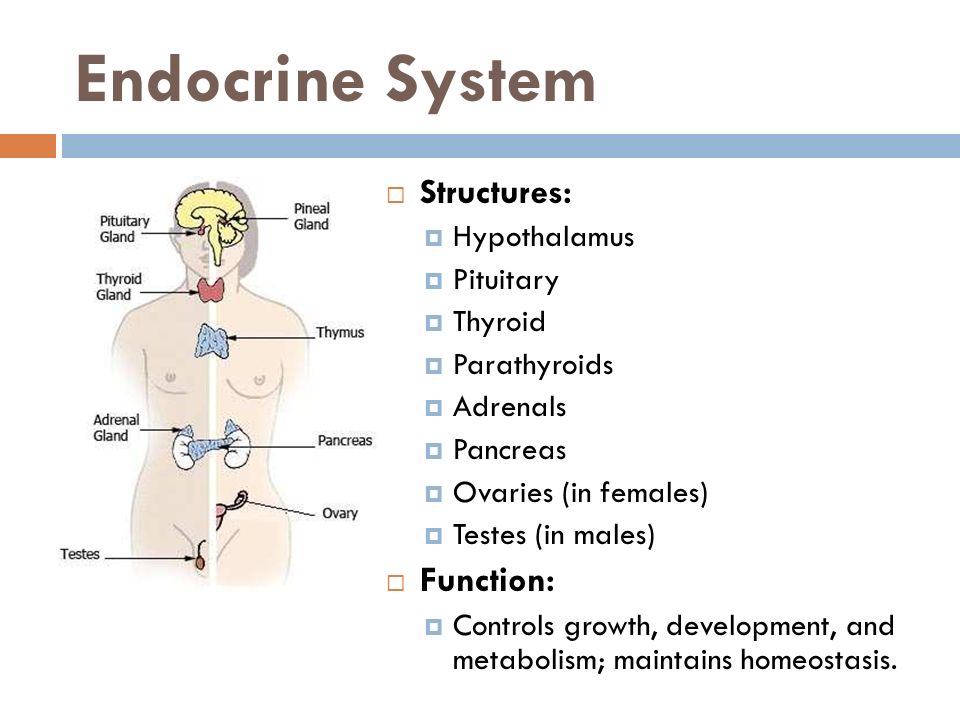 In contrast, it may take up to 48 hours for target cells to respond to certain reproductive hormones.
In contrast, it may take up to 48 hours for target cells to respond to certain reproductive hormones.
Interactive Link
Visit this link to watch an animation of the events that occur when a hormone binds to a cell membrane receptor. What is the secondary messenger made by adenylyl cyclase during the activation of liver cells by epinephrine?
In addition, endocrine signaling is typically less specific than neural signaling. The same hormone may play a role in a variety of different physiological processes depending on the target cells involved. For example, the hormone oxytocin promotes uterine contractions in people in labor. It is also important in breastfeeding, and may be involved in the sexual response and in feelings of emotional attachment in humans.
In general, the nervous system involves quick responses to rapid changes in the external environment, and the endocrine system is usually slower acting—taking care of the internal environment of the body, maintaining homeostasis, and controlling reproduction (Table 17. 1). So how does the fight-or-flight response that was mentioned earlier happen so quickly if hormones are usually slower acting? It is because the two systems are connected. It is the fast action of the nervous system in response to the danger in the environment that stimulates the adrenal glands to secrete their hormones. As a result, the nervous system can cause rapid endocrine responses to keep up with sudden changes in both the external and internal environments when necessary.
1). So how does the fight-or-flight response that was mentioned earlier happen so quickly if hormones are usually slower acting? It is because the two systems are connected. It is the fast action of the nervous system in response to the danger in the environment that stimulates the adrenal glands to secrete their hormones. As a result, the nervous system can cause rapid endocrine responses to keep up with sudden changes in both the external and internal environments when necessary.
Endocrine and Nervous Systems
| Endocrine system | Nervous system | |
|---|---|---|
| Signaling mechanism(s) | Chemical | Chemical/electrical |
| Primary chemical signal | Hormones | Neurotransmitters |
| Distance traveled | Long or short | Always short |
| Response time | Fast or slow | Always fast |
| Environment targeted | Internal | Internal and external |
Table
17. 1
1
Structures of the Endocrine System
The endocrine system consists of cells, tissues, and organs that secrete hormones as a primary or secondary function. The endocrine gland is the major player in this system. The primary function of these ductless glands is to secrete their hormones directly into the surrounding fluid. The interstitial fluid and the blood vessels then transport the hormones throughout the body. The endocrine system includes the pituitary, thyroid, parathyroid, adrenal, and pineal glands (Figure 17.2). Some of these glands have both endocrine and non-endocrine functions. For example, the pancreas contains cells that function in digestion as well as cells that secrete the hormones insulin and glucagon, which regulate blood glucose levels. The hypothalamus, thymus, heart, kidneys, stomach, small intestine, liver, skin, ovaries, and testes are other organs that contain cells with endocrine function. Moreover, adipose tissue has long been known to produce hormones, and recent research has revealed that even bone tissue has endocrine functions.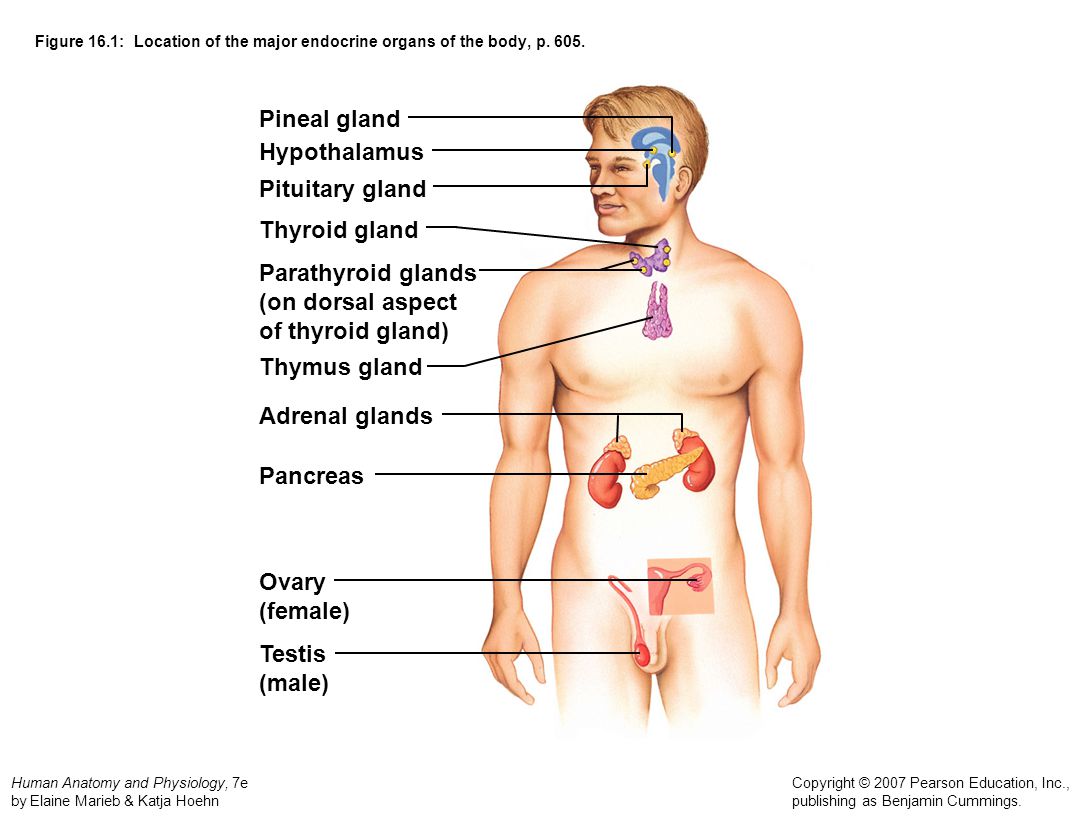
Figure
17.2
Endocrine System
Endocrine glands and cells are located throughout the body and play an important role in homeostasis.
The ductless endocrine glands are not to be confused with the body’s exocrine system, whose glands release their secretions through ducts. Examples of exocrine glands include the sebaceous and sweat glands of the skin. As just noted, the pancreas also has an exocrine function: most of its cells secrete pancreatic juice through the pancreatic and accessory ducts to the lumen of the small intestine.
Other Types of Chemical Signaling
In endocrine signaling, hormones secreted into the extracellular fluid diffuse into the blood or lymph, and can then travel great distances throughout the body. In contrast, autocrine signaling takes place within the same cell. An autocrine (auto- = “self”) is a chemical that elicits a response in the same cell that secreted it. Interleukin-1, or IL-1, is a signaling molecule that plays an important role in inflammatory response.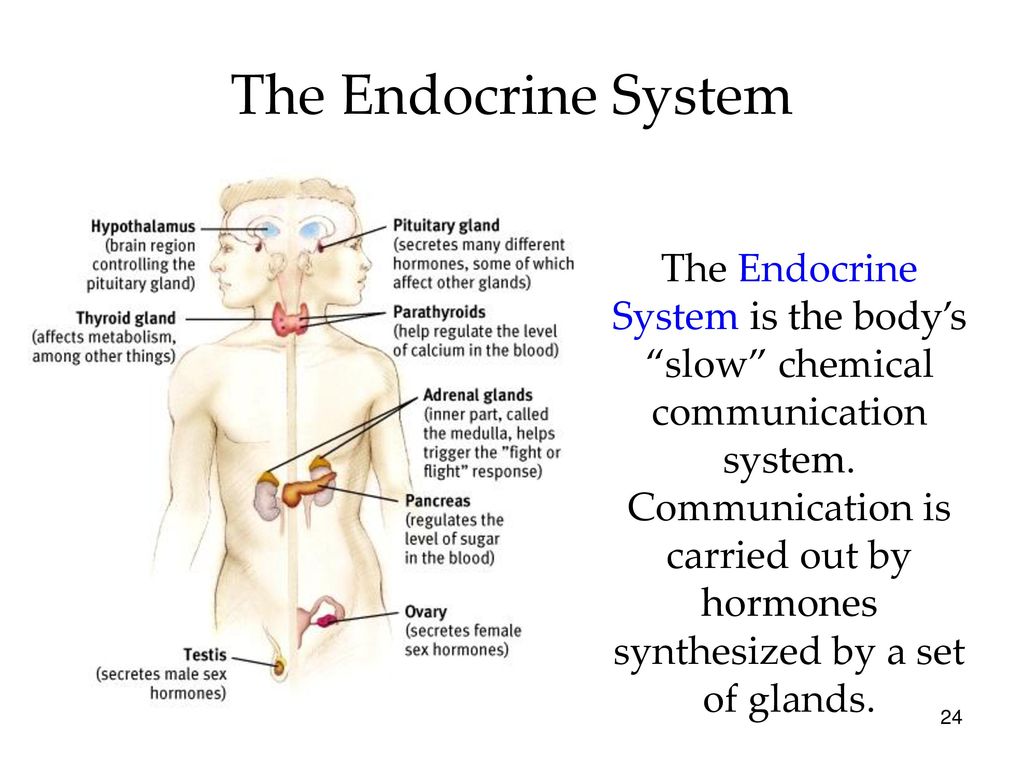 The cells that secrete IL-1 have receptors on their cell surface that bind these molecules, resulting in autocrine signaling.
The cells that secrete IL-1 have receptors on their cell surface that bind these molecules, resulting in autocrine signaling.
Local intercellular communication is the province of the paracrine, also called a paracrine factor, which is a chemical that induces a response in neighboring cells. Although paracrines may enter the bloodstream, their concentration is generally too low to elicit a response from distant tissues. A familiar example to those with asthma is histamine, a paracrine that is released by immune cells in the bronchial tree. Histamine causes the smooth muscle cells of the bronchi to constrict, narrowing the airways. Another example is the neurotransmitters of the nervous system, which act only locally within the synaptic cleft.
Career Connection
Endocrinologist
Endocrinology is a specialty in the field of medicine that focuses on the treatment of endocrine system disorders. Endocrinologists—medical doctors who specialize in this field—are experts in treating diseases associated with hormonal systems, ranging from thyroid disease to diabetes mellitus. Endocrine surgeons treat endocrine disease through the removal, or resection, of the affected endocrine gland.
Endocrine surgeons treat endocrine disease through the removal, or resection, of the affected endocrine gland.
Patients who are referred to endocrinologists may have signs and symptoms or blood test results that suggest excessive or impaired functioning of an endocrine gland or endocrine cells. The endocrinologist may order additional blood tests to determine whether the patient’s hormonal levels are abnormal, or they may stimulate or suppress the function of the suspect endocrine gland and then have blood taken for analysis. Treatment varies according to the diagnosis. Some endocrine disorders, such as type 2 diabetes, may respond to lifestyle changes such as modest weight loss, adoption of a healthy diet, and regular physical activity. Other disorders may require medication, such as hormone replacement, and routine monitoring by the endocrinologist. These include disorders of the pituitary gland that can affect growth and disorders of the thyroid gland that can result in a variety of metabolic problems.
Some patients experience health problems as a result of the normal decline in hormones that can accompany aging. These patients can consult with an endocrinologist to weigh the risks and benefits of hormone replacement therapy intended to boost their natural levels of reproductive hormones.
In addition to treating patients, endocrinologists may be involved in research to improve the understanding of endocrine system disorders and develop new treatments for these diseases.
Which nervous system regulates the work of the endocrine system
The human body is a complex mechanism. Its cells, tissues and organs must work harmoniously and harmoniously. This condition is ensured by the work of two signaling systems: endocrine and nervous. Their interconnection provides several important conditions:
- homeostasis – the body’s ability to maintain constant characteristics;
- adaptation – the ability to change some factors of the internal environment depending on changes in external conditions;
- cell growth;
- reproduction.

The nervous system is a collection of organs that provide innervation to all organs and tissues. Its central section includes the brain and spinal cord, and the peripheral section includes the nerves. Information is captured by receptors, then moves in the form of impulses through nerve cells and reaches the brain. It provides a quick reaction in the form of muscle movement or other response to a stimulus. Also, the nervous system regulates the work of the endocrine system, controlling the intensity of hormone production.
The endocrine system is a collection of glands that secrete hormones into the blood. It includes the hypothalamus, pituitary gland, as well as peripheral glands: thyroid, pancreas, genital, adrenal glands. Hormones are biologically active substances that combine with the cells of various organs and can change their work, speed up or slow down biochemical processes in the body.
To understand which nervous system regulates the work of the endocrine system, you need to track the relationship. It is called “neuroendocrine regulation” and consists in controlling the production of hormones by the endocrine glands. This process is ensured by the work of several structures: the hypothalamus, neurotransmitter hormones, and the adrenal medulla.
It is called “neuroendocrine regulation” and consists in controlling the production of hormones by the endocrine glands. This process is ensured by the work of several structures: the hypothalamus, neurotransmitter hormones, and the adrenal medulla.
The role of the hypothalamus
The hypothalamus is a small area of the diencephalon, which is considered the center of neuroendocrine regulation. It is connected with other parts of the nervous system, the brain and spinal cord. Together with the pituitary gland, it forms the hypothalamic-pituitary system and regulates the intensity of the production of its hormones.
The hypothalamus receives signals from the following structures:
- basal nuclei (ganglia) – accumulations of gray matter in the white matter of the brain;
- spinal cord;
- parts of the brain: oblong, middle, thalamus, as well as some parts of the cerebral hemispheres.
The hypothalamus is the center that accumulates data from the whole organism, as well as from the external environment. Nerve cells of the hypothalamus are able to produce several types of neuroendocrine transmitters – biologically active substances that affect the intensity of the synthesis of tropic pituitary hormones:
Nerve cells of the hypothalamus are able to produce several types of neuroendocrine transmitters – biologically active substances that affect the intensity of the synthesis of tropic pituitary hormones:
- Liberins – a group of compounds that stimulate hormonal synthesis. So, somatoliberin increases the production of somatotropic growth hormone, thyreoliberin – thyrotropic, gonadoliberin – luteinizing and follicle-stimulating hormones.
- Statins are substances that suppress the production of tropic hormones by the pituitary gland. There are varieties such as somatostatin, prolactostatin, melanostatin.
- Oxytocin and vasopressin are hormones produced by the hypothalamus but stored in the posterior pituitary gland. The first increases during childbirth and causes contraction of the muscular wall of the uterus, but also performs other functions. Vasopressin regulates water metabolism, increases vascular tone.
Hormones of the hypothalamus enter the pituitary gland through the bloodstream and influence its functions there. Statins and liberins do not always act strictly selectively. So, somatostatin can suppress the production of not only somatotropin, but also thyrotropic hormone, insulin and prolactin.
Statins and liberins do not always act strictly selectively. So, somatostatin can suppress the production of not only somatotropin, but also thyrotropic hormone, insulin and prolactin.
Nervous regulation of the adrenal glands
Adrenal glands are paired glands, which in humans are located in the region of the upper pole of the kidneys. In their structure, two components are distinguished: cortical and medulla. The cortex performs an endocrine function and produces hormones into the blood, and the medulla is an intermediate link between the nervous and endocrine systems.
One of the functions of the adrenal medulla is the production of catecholamines. This is a group of biologically active compounds that includes epinephrine and norepinephrine. They are activated to the maximum in stressful situations, when it is urgent to bring the body into tone, and trigger a number of changes:
- accelerated heartbeat;
- increased vascular tone;
- increase in blood pressure;
- expansion of the bronchial lumen;
- inhibition of the digestive tract and decrease in the secretion of its glands;
- dilated pupils;
- increased activity of sweat glands.

The adrenal medulla has a similar structure to the nervous tissues, since during fetal development it is formed from identical rudiments. Histologically, the cells in this area are deformed neurons of the sympathetic autonomic nervous system, which then transformed into endocrine cells. They are activated under the influence of sympathetic nerve fibers. As a result of their irritation, adrenaline and norepinephrine are released into the bloodstream.
Catecholamines are considered “stress hormones” because their concentration increases in uncomfortable conditions for the body. They are activated during times of pain, exposure to cold, exercise, and muscle fatigue. Also, their increase can be caused by stress, vivid emotions, prolonged mental stress and other factors. The work of the adrenal medulla is controlled by structures such as the cerebral cortex and medulla oblongata, as well as the hypothalamus.
Feedback
In the process of neuroendocrine regulation, a two-way connection is observed. The organs of the endocrine system are under the control of nervous structures that stimulate or inhibit the synthesis of biologically active compounds. However, hormones also affect the central and peripheral parts of the nervous system. Thus, the thyroid gland secretes substances that act directly on the brain, bypassing the complex blood-brain barrier. They are useful for brain tissues, as they stimulate their growth and development, improve mental functions. Adrenaline and norepinephrine can also affect neurons, thereby participating in brain function.
The organs of the endocrine system are under the control of nervous structures that stimulate or inhibit the synthesis of biologically active compounds. However, hormones also affect the central and peripheral parts of the nervous system. Thus, the thyroid gland secretes substances that act directly on the brain, bypassing the complex blood-brain barrier. They are useful for brain tissues, as they stimulate their growth and development, improve mental functions. Adrenaline and norepinephrine can also affect neurons, thereby participating in brain function.
Specialists of the medical center “Yunona” are engaged in diagnosing changes in the nervous and endocrine systems: a neurologist and an endocrinologist. You can make an appointment by calling 8 (831) 225-56-56.
Structure of the endocrine system Pathologies of the neuroendocrine system
- Main
- Analyzes
- Directory of Diseases
- Organization and pathology of the endocrine system
The endocrine (neuroendocrine) function performs the regulatory activity of internal organs with the help of biologically active substances – hormones, which, released by endocrine structures, enter the bloodstream or pass into nearby cells.
General concept and characteristics of the endocrine system
Thanks to the endocrine function, many internal organs are controlled and regulated. In addition, adaptation of the body to periodic changes in the external environment is ensured, while maintaining a normal homeostasis balance to ensure a healthy and natural human existence.
Neuroendocrine function is of the following categories:
- Glandular . Produces glandular elements.
- Diffuse . Endocrine biological elements are localized throughout the body and produce hormones called aglandular.
Structural and functional organization of the endocrine system
Some glands (gonads and pancreas) are joint, that is, they produce exogenous and endogenous secretions.
It is also worth noting that certain organs can produce certain hormones to some extent. For example, the kidneys release renin , prostaglandin, erythropoietin into the blood, and the atrium – atrial natriuretic peptide.
For example, the kidneys release renin , prostaglandin, erythropoietin into the blood, and the atrium – atrial natriuretic peptide.
The diffuse endocrine system also plays an important role in the production of essential hormones. Thus, neuropeptides produced by the central and peripheral nervous system regulate all important physiological functions of the human body. It is also worth mentioning the gastropancreatic endocrine system, which produces biological (signal) elements.
Pathologies of the endocrine system and their characteristics
Endocrine pathologies are diseases caused by dysfunction of one or more endocrine glands.
I. Violation of the combined structures of the pituitary and hypothalamus
- Acromegaly . The disease is associated with increased production of somatotropic hormone (growth).
- Itsenko-Cushing pathology .
 Pathology is characterized by an increase in the production of biological substances by the adrenal glands, which leads to hyperplasia of the pituitary tissue or the appearance of compaction in it.
Pathology is characterized by an increase in the production of biological substances by the adrenal glands, which leads to hyperplasia of the pituitary tissue or the appearance of compaction in it. - Prolactinoma . Benign education, manifested most often in women.
- Hyperprolactinemia . An increase in the concentration of the hormone prolactin in the bloodstream.
- Diabetes insipidus . Polyuria (urine excretion – up to 8-15 liters per day) and polydepsia (heavy drinking).
II. Thyroid dysfunction
- Hyperthyroidism . Overproduction thyroxine (T4) and triiodothyronine (T3).
- Hypothyroidism. Decreased thyroxine (T4) and triiodothyronine (T3).
- Diffuse toxic goiter . Excessive secretion of thyroid hormones, which leads to thyrotoxicosis.

- Thyrotoxic neoplasm . The presence of a benign tumor in the thyroid gland leads to an increase in the level of thyroid hormones.
III. Diseases of the pancreas
- Diabetes mellitus . Insufficient production of the hormone insulin, which leads to an increase in sugar in the bloodstream.
- Adrenal hormonal tumor . Benign or malignant growth of atypical structures of the adrenal glands.
IV. Pathological changes in the adrenal glands
- Chronic adrenal insufficiency . Decreased glucocorticoid and mineralocorticoid function of the adrenal glands.
- Primary hyperaldosteronism . It develops as a result of excessive release of aldosterone .
V. Diseases of the gonads (in women)
- Premenstrual syndrome . Occurs in premenstrual days (2-8 days before menstruation).




 Pathology is characterized by an increase in the production of biological substances by the adrenal glands, which leads to hyperplasia of the pituitary tissue or the appearance of compaction in it.
Pathology is characterized by an increase in the production of biological substances by the adrenal glands, which leads to hyperplasia of the pituitary tissue or the appearance of compaction in it.
